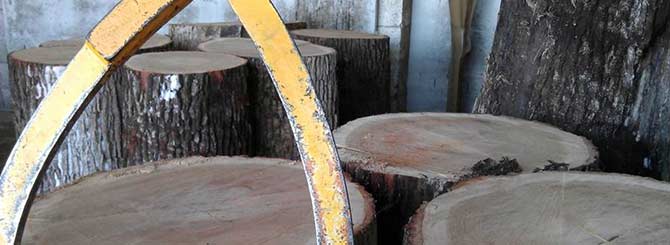Date£º
2014-10-10 11:12 Source£º
winesearcher Author:
Wine-Searcher staff Translator:
French scientists have made tracing the exact origin of a winery's barriques, foudres and demi-muids easier.

Erwan Guichoux / Inra UMR BIOGECO | Half a million barrels are made from French oak annually
Precision winemakers and fraud inspectors just got a helping hand from French researchers decoding the oak genome: they can now trace the origins of the oak used for wine barrels.
"In 2000, we were able to identify the geographic origin of the tree," said research engineer Erwan Guichoux at the Bordeaux-Aquitaine branch of the French National Institute for Agricultural Research (INRA). "Now we've greatly improved the technical aspects of doing that and we can identify the species."
For most of the world's wine, the impact will be nil. Less than 2 percent of our wine ever spends time in an oak barrel. But winemakers crafting premium wines, rely on French oak barrels for their tannins and the flavors of vanilla, clove, caramel, and smoke that they impart.
At 600 to 850 euros ($750 to $1000) a barrel, it's a significant expense. Barrels made from Eastern European oak cost far less, but there¡¯s a drawback.
"They don¡¯t have the same regularity of aromas as French oak and you can't guarantee the quality," said Jean-Luc Sylvain, chief executive of Tonnellerie Sylvain near Bordeaux, and president of the French Coopers Federation. "We¡¯ve been managing our oak forests for 350 years."
France's oak industry stretches back to 1669, when Jean-Baptiste Colbert, Secretary of the Navy under Louis XIV, launched a forestry program, cultivating oak for warships to fight the English. The payoff was not victory on high seas, but towering trees with superior and reliable aromatic components that allowed the French to dominate the barrel business.
The federation's 50 members produce more than a half a million barrels annually, worth 332 million euros ($419m), exporting them around the world.
With an eye to the main chance, unscrupulous merchants have been known to pass off cheaper European oak for French oak. Researchers say random DNA controls will be much easier now, deterring fraud. INRA commercializes the "flexible, quick, accurate, and cost-effective" technology through a partner institute, the FCBA.
But coopers cast doubts on the practical use at the barrel end.
"We buy 10,000 trees a year. There are 45 different pieces of wood in a wine barrel," said Sylvain. "To control the geographic origin of the wood used for the barrel ¨C 45 tests per barrel, I don't see that ¡"
Scientists disagree saying that the advances in traceability could appeal to the elite of the wine world.
"Now it's more about using traceability to make improvements," said Guichoux.
Increasingly, winemakers are searching for barrels with a precise aromatic profile.
"The new technology allows them to sort the trees according to aromatic profile and tannins," Guichoux remarked. "The two oak species, sessile and pedunculate, have completely different impacts."
Sessile oak is more aromatic, less tannic and preferred for wine. Pedunculate is richer in tannins and loved by Cognac producers. But within each species, certain forests produce trees with specific aroma profiles, which might appeal to particularly demanding winemakers.
"It's really a way to add value," Guichoux said.